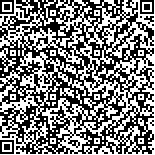| Quote
: |
刘红梅, 周平兰, 王竹鑫, 彭敏, 欧巧玲, 邓蓝冰, 周宜.基于JAK-STAT/NF-κB通路探究黄精“生熟异治”治疗缺血性脑卒中大鼠的保护作用及分子机制研究[J].湖南中医药大学学报英文版,2025,45(4):598-607.[Click to copy
] |
|
| |
|
|
| This paper
:Browser 12times Download 5times |
| 基于JAK-STAT/NF-κB通路探究黄精“生熟异治”治疗缺血性脑卒中大鼠的保护作用及分子机制研究 |
| 刘红梅,周平兰,王竹鑫,彭敏,欧巧玲,邓蓝冰,周宜 |
| (湖南中医药大学第二附属医院, 湖南 长沙 410005) |
| 摘要: |
| 目的 基于网络药理学和实验探究生、熟黄精及其有效成分治疗缺血性脑卒中(IS)大鼠的保护作用及分子机制。方法 运用网络药理学方法构建生、熟黄精治疗IS的“关键成分-核心靶点-通路”网络图。将56只大鼠随机分为假手术组、模型组、尼莫地平组(20 mg/kg)、生黄精多糖低剂量组(0.1 g/kg)、生黄精多糖高剂量组(0.4 g/kg)、熟黄精多糖低剂量组(0.1 g/kg)、熟黄精多糖高剂量组(0.4 g/kg)。除手术组外,其余组采用线栓法建立大鼠IS模型。造模成功后,灌胃给药,每日1次,连续7 d。按照Zea Longa评分标准对各组大鼠给药前及给药后0.5、1、3、5、7 d的Longa神经功能进行评分;给药7 d后,取脑组织,计算脑含水量;ELISA法检测大鼠血清中白细胞介素(IL)-1β、IL-6和肿瘤坏死因子-α(TNF-α)、丙二醛(MDA)、过氧化氢酶(CAT)和超氧化物歧化酶(SOD)、泛素羧基端酯酶L1(UCH-L1)、神经元特异性烯醇化酶(NSE)和神经胶质纤维酸性蛋白(GFAP)含量;Western blot检测脑组织中磷酸化Janus激酶2/Janus激酶2(p-JAK2/JAK2)、磷酸化信号转导和转录激活因子3/信号转导和转录激活因子3(p-STAT3/STAT3)和磷酸化核因子κB/核因子κB(p-NF-κB/NF-κB)、B细胞淋巴瘤-2(Bcl-2)、Bcl-2相关X蛋白(Bax)和半胱氨酸蛋白酶-3(Caspase-3)的蛋白表达水平;RT-qPCR法检测Bcl-2、Bax和Caspase-3的mRNA相对表达水平。结果 网络药理学结果表明,蛋白激酶B α、细胞色素P450家族2亚家族D成员 6和STAT3等为生、熟黄精治疗IS的共同潜在靶点;雌激素受体α、二肽基肽酶-4和雄激素受体等为生黄精治疗IS的特有靶点;Caspase-3、代谢型谷氨酸受体1和溶质载体家族1成员 2等为熟黄精治疗IS的潜在靶点;氧化应激反应和炎症反应信号转导等为生、熟黄精治疗IS的共同信号通路。与假手术组相比,模型组大鼠脑含水量、神经功能评分均升高(P<0.01);血清IL-1β、IL-6、TNF-α、MDA、UCH-L1、NSE和GFAP水平均升高(P<0.05,P<0.01),血清CAT和SOD水平显著降低(P<0.01);脑组织中p-JAK2/JAK2、p-STAT3/STAT3和p-NF-κB/NF-κB蛋白表达水平升高(P<0.05),Bax和Caspase-3的mRNA和蛋白表达水平升高(P<0.05),Bcl-2的mRNA和蛋白表达水平降低(P<0.05)。与模型组相比,生黄精多糖低、高剂量组和熟黄精多糖低、高剂量组大鼠的神经功能评分在给药治疗5 d后降低(P<0.01);生黄精多糖组大鼠血清IL-1β、IL-6、TNF-α 水平降低(P<0.05,P<0.01),熟黄精多糖组大鼠血清MDA、UCH-L1水平降低(P<0.05,P<0.01),生黄精多糖高剂量组及熟黄精多糖组血清SOD水平升高(P<0.05);熟黄精多糖高剂量组脑组织中p-JAK2/JAK2、p-STAT3/STAT3和p-NF-κB/NF-κB蛋白表达水平降低(P<0.05,P<0.01),Bax和Caspase-3 mRNA表达水平降低(P<0.05,P<0.01);生、熟黄精多糖高剂量组脑组织中Bcl-2 mRNA表达水平升高(P<0.05)。结论 生、熟黄精多糖可改善IS大鼠的神经损伤,其机制可能通过减少炎症因子表达、改善氧化应激、降低神经损害标志物表达水平,并调控JAK-STAT/NF-κB信号通路,从而减轻脑组织炎症反应。 |
| 关键词: 生黄精 熟黄精 缺血性脑卒中 JAK-STAT/NF-κB通路 生熟异治 |
| DOI:10.3969/j.issn.1674-070X.2025.04.003 |
| Received:October 14, 2024 |
| 基金项目:王竹鑫全国老药工传承工作室(国中医药人教函〔2024〕255号);第七批全国老中医药专家学术经验继承项目;湖南省中医药管理局重点课题(A2023033);湖南省自然科学基金科药联合项目(2021JJ80063);湖南省中医药管理局重点课题(C2022028)。 |
|
| Protective effects and molecular mechanisms of "differential treatments of the raw and processed" Huangjing (Polygonati Rhizoma) on ischemic stroke rats based on JAK-STAT/NF-κB pathway |
| LIU Hongmei, ZHOU Pinglan, WANG Zhuxin, PENG Min, OU Qiaoling, DENG Lanbing, ZHOU Yi |
| (The Second Hospital of Hunan University of Chinese Medicine, Changsha, Hunan 410005, China) |
| Abstract: |
| Objective To investigate the protective effects and molecular mechanisms of raw and processed Huangjing (Polygonati Rhizoma) and their active components in treating ischemic stroke (IS) rats through network pharmacology and experimental studies. Methods A network pharmacology approach was used to construct a "key component-core target-pathway" network diagram for raw and processed Huangjing (Polygonati Rhizoma) in IS treatment. Fifty-six rats were randomly divided into sham-operated, model, nimodipine (20 mg/kg), low-dose raw Huangjing polysaccharide (0.1 g/kg), high-dose raw Huangjing polysaccharide (0.4 g/kg), low-dose processed Huangjing polysaccharide (0.1 g/kg), and high-dose processed Huangjing polysaccharide (0.4 g/kg) groups. Except for the sham-operated group, IS models were established via the suture-occluded method. After successful modeling, drugs were administered by gavage once daily for seven days. Longa neurological function was scored using the Zea Longa scale before administration and at 0.5, 1, 3, 5, and 7 days after administration. After seven days, brain tissue was collected to calculate brain water content. Serum levels of interleukin (IL)-1β, IL-6, tumor necrosis factor-α (TNF-α), malondialdehyde (MDA), catalase (CAT), superoxide dismutase (SOD), ubiquitin C-terminal hydrolase L1 (UCH-L1), neuron-specific enolase (NSE), and glial fibrillary acidic protein (GFAP) were measured by ELISA. Western blot was used to determine protein expression levels of phosphorylated Janus kinase 2/Janus kinase 2 (p-JAK2/JAK2), phosphorylated signal transducer and activator of transcription 3/signal transducer and activator of transcription 3 (p-STAT3/STAT3), phosphorylated nuclear factor-κB/nuclear factor-κB (p-NF-κB/NF-κB), B-cell lymphoma-2 (Bcl-2), Bcl-2-associated X protein (Bax), and caspase-3 in brain tissue. RT-qPCR was used to measure the relative mRNA expression levels of Bcl-2, Bax, and caspase-3. Results Network pharmacology identified protein kinase B α, cytochrome P450 family 2 subfamily D member 6, and STAT3 as common potential targets of raw and processed Huangjing (Polygonati Rhizoma) for IS treatment. Estrogen receptor α, dipeptidyl peptidase-4, and androgen receptor were unique targets for raw Huangjing (Polygonati Rhizoma), while caspase-3, metabotropic glutamate receptor 1, and solute carrier family 1 member 2 were potential targets for processed Huangjing (Polygonati Rhizoma). Oxidative stress response and inflammatory signaling transduction were common pathways for both. Compared with the sham-operated group, the model group showed increased brain water content and neurological function scores (P<0.01); elevated serum IL-1β, IL-6, TNF-α, MDA, UCH-L1, NSE, and GFAP levels (P<0.05); and significantly decreased CAT and SOD levels (P<0.01). The protein expression levels of p-JAK2/JAK2, p-STAT3/STAT3, and p-NF-κB/NF-κB in brain tissue increased (P<0.05), and the mRNA and protein expression levels of Bax and Caspase-3 elevated (P<0.05), while the mRNA and protein expression level of Bcl-2 decreased (P<0.05). Compared with the model group, both low- and high-dose raw and processed Huangjing polysaccharide groups showed reduced neurological function scores after five days of drug treatment(P<0.01). Raw Huangjing polysaccharide groups had lower serum levels of IL-1β, IL-6, and TNF-α (P<0.05, P<0.01), while processed Huangjing polysaccharide groups showed reduced serum levels of MDA and UCH-L1 (P<0.05, P<0.01). High-dose raw Huangjing polysaccharide group and processed Huangjing polysaccharide groups showed increases in serum SOD level (P<0.05). High-dose processed Huangjing polysaccharide group showed decreases in p-JAK2/JAK2, p-STAT3/STAT3, and p-NF-κB/NF-κB protein expression levels (P<0.05, P<0.01), as well as mRNA expression levels of Bax and caspase-3 in brain tissue (P<0.05, P<0.01). High-dose raw and processed Huangjing polysaccharide groups exhibited elevated Bcl-2 mRNA expression level (P<0.05). Conclusion Both raw and processed Huangjing polysaccharides can alleviate neural injury in IS rats, and the mechanism may involve reducing inflammatory cytokines, improving oxidative stress, lowering neural damage biomarkers expression, and modulating the JAK-STAT/NF-κB signaling pathway, thereby attenuating cerebral inflammatory reaction. |
| Key words: raw Huangjing (Polygonati Rhizoma) processed Huangjing (Polygonati Rhizoma) ischemic stroke JAK-STAT/NF-κB pathway differential treatments of the raw and processed |
|

二维码(扫一下试试看!) |
|
|
|
|


